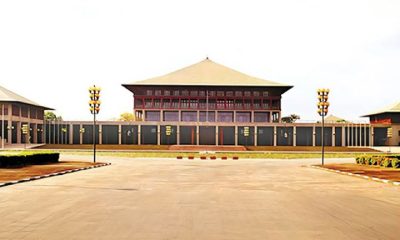Latest News
New Zealand minister resigns after he ‘placed hand’ on staff’s arm

New Zealand’s commerce minister Andrew Bayly has resigned as a government minister after he “placed a hand” on a staff member’s upper arm last week, in what he described as “overbearing” behaviour.
Bayly said on Monday that he was “deeply sorry” about the incident, which he described as not an argument but an “animated discussion”.
He remains a member of parliament.
His resignation comes after he was criticised last October for calling a winery worker a “loser”- including putting his fingers in an ‘L’ shape on his forehead – and allegedly using an expletive directed at them. He later issued a public apology.
“As many of you know, I have been impatient to drive change in my ministerial portfolios,” Bayly said in a statement announcing his resignation.
“Last week I had an animated discussion with a staff member about work. I took the discussion too far, and I placed a hand on their upper arm, which was inappropriate.”
He said a complaint had been made but would not elaborate further on exactly what had happened.
Bayly resigned last Friday, New Zealand Prime Minister Christopher Luxon later told a press conference, adding that the incident happened three days earlier, on 18 February.
Luxon said on Monday the government’s handling the issue within a week was “pretty quick” and “pretty impressive”. He denied that he should have asked Bayly to step down following October’s winery incident, and said “never say never” when asked if there was a way back for the 63-year-old into another cabinet position.
However, Labour leader Chris Hipkins criticised Luxon as being “incredibly weak”, saying the incident with the staff member should not have been dragged over the weekend.
“Christopher Luxon has once again set the bar for ministerial behaviour so low, that it would be almost impossible not to get over it,” he told reporters on Monday.
Bayly himself said that he had to talk to his family and “would have had difficulty” speaking to the media earlier.
He was first elected to the New Zealand Parliament in 2014 as an MP for the current ruling National Party. He was appointed the Minister of Commerce and Consumer Affairs, Minister for Small Business and Manufacturing, and Minister of Statistics following Luxon’s election in late 2023.
He was also appointed minister for the ACC – the national accidental injury compensation scheme – following a cabinet reshuffle earlier this year. Before joining politics, Bayly worked in the finance industry.
Luxon said Scott Simpson, National’s senior whip, would take over the ACC and Commerce and Consumer Affairs portfolios.
Bayly is the first minister to resign of his own accord under PM Luxon, whose favourability has dipped considerably, according to recent polls. Both the 1News-Verian poll and the Post/Freshwater Strategy poll show his National-led coalition government is losing support among voters.
The government has recently come under fire for some policies that were seen by some as anti-Māori, including the introduction of a bill that many argued undermined Māori rights and the dissolution of the Māori Health Authority – which was set up under the last Labour government to try and create greater health equality.
[BBC]
Latest News
Myanmar quake toll passes 1,600 as people dig for survivors with bare hands

The number of people known to have died following the devastating earthquake in Myanmar has risen to more than 1,600, with people in some areas telling the BBC they had been left to dig through rubble for their loved ones with their bare hands.
An acute lack of equipment, patchy communication networks and wrecked roads and bridges were also hampering the search for survivors.
The quake has flattened much of Mandalay, the country’s second-largest city. There was applause when rescuers pulled a woman alive from the wreckage of a 12-storey apartment block some 30 hours after it collapsed, but the Red Cross says more than 90 people may still be trapped there.
In a nearby township, rescue workers found the bodies of 12 preschool children and a teacher under a building housing a kindergarten.
Cracks and surface distortions to the main highway between the biggest city Yangon, the capital Nay Pyi Taw and Mandalay had caused severe transport disruptions, UN humanitarian agency OCHA said.
There were also shortages of medical supplies including trauma kits, blood bags, anesthetics, essential medicines and tents for health workers, it said.
Although rescue teams have been at work since yesterday and international aid has begun to enter the country, help is yet to reach the worst-hit areas and ordinary people have been trying to dig survivors out by hand.
Widely shared footage shows two men moving rubble to pry out a young woman trapped between two concrete slabs.
The BBC has spoken to locals who said that people were screaming for help from under the debris.
Elsewhere, other rescue workers have been listening out for signs of life. ”We can only rescue people when we hear them,” one said.
Earlier on Saturday, a rescue team in the Sintkai township in Mandalay’s Kyaukse district pulled out a number of people trapped in the debris of a private school. Six of them – five females and one male – had died by the time the rescue teams arrived. Among the victims were students, teachers and school staff.
A lack of equipment is greatly slowing down the rescues, a worker told BBC Burmese: “We are making do with the equipment we have. We have been trying for hours to pull out a girl trapped under the collapsed school.”
Another worker in Mandalay told a BBC reporter in Yangon that communication had been near impossible.
“The main thing is that we don’t have internet lines, we don’t have phone lines, so it’s very difficult to connect with each other. The rescue team has arrived. But we don’t know where it will go, because the phone lines are down.”
A Mandalay resident said people were doing their best in the chaotic circumstances.
“There is no coordination in the rescue efforts, no one to lead them, or tell them what to do. Locals have had to fend for themselves. If they find dead bodies in the debris, they don’t even know where to send the bodies; hospitals are overwhelmed and unable to cope,” the resident said.
The junta has put the number of damaged buildings in the Mandalay region, the epicentre of the earthquake, at more than 1,500. Power outages have exacerbated the situation, and according to officials restoring power could take days.
Mandalay airport is not functional as the runways were damaged during the earthquake. The military council said that it had been working to resume operations and a temporary hospital, medical relief camp and shelter have been set up there.
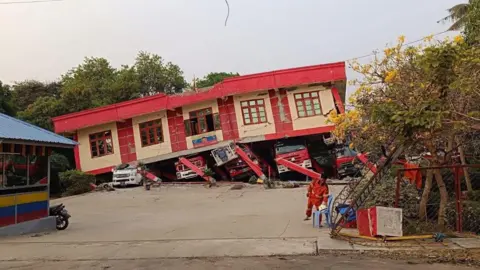
Less than 25km (15 miles) from Mandalay in Sagaing, the older of two bridges connecting the regions has completely collapsed and the newer one has developed cracks, cutting off access for rescue teams.
“Right now, there are not enough people even for emergency rescue. We can’t pick up bodies, there are so many people trapped. We can’t cross either bridge, so we are all trapped in the rubble. Please help emergency rescuers come and rescue us,” a local resident told BBC Burmese.
The recently constructed capital Nay Pyi Taw, where the military junta is headquartered, has been hit by aftershocks and small tremors. The city has seen extensive damage with high numbers of casualties, collapsed buildings and buckled roads.

Meanwhile, even while the junta has made a rare international appeal for aid, it has continued air strikes and drone attacks against the ethnic armies and armed groups it has been fighting in the country’s four-year civil war.
BBC Burmese confirmed that seven people were killed in an air strike in Naungcho in northern Shan state. This strike took place around 15:30 local time, less than three hours after the quake struck.
Pro-democracy rebel groups fighting to remove the military from power have reported aerial bombings in Chang-U township in the central Sagaing region, the epicentre of the quake. There are also reports of airstrikes in regions near the Thai border.
The UN’s special rapporteur on human rights in Myanmar, Tom Andrews, urged the junta to cease bombing raids.
“The problem is that you still have military operations going on right now… Military strikes by the military junta,” he told the BBC.
“I’m calling upon the junta to just stop, stop any of its military operations. This is completely outrageous and unacceptable.”

[BBC]
Latest News
Chapman, Abbas and Smith see off Pakistan challenge to give New Zealand 1-0 series lead

Mark Chapman inflicted misery upon his favourite opponents once more, a career-best 132 off 111 balls helping New Zealand to a 73-run victory in Napier. A strong start from Pakistan’s bowlers came undone by a 199-run fourth wicket partnership between Chapman and Daryl Mitchell, whose grittier 76 came in the slipstream of Chapman’s more regal knock. It was topped off by a cameo from Pakistan-born New Zealand debutant Muhammad Abbas, who scored the quickest 50 on debut in ODI history, taking 24-balls to get there as the hosts posted 344.
Pakistan’s response for large periods suggested they were well on course for victory. Fifties from Babar Azam and Salman Agha put Pakistan in pole position before Pakistan collapsed from 249 for 3 to 271 all out, losing three wickets for four runs as New Zealand turned the tables to seal a victory that was, for long periods, less comfortable than the final scorecard.
When Mohammad Rizwan won the toss and bowled first, it appeared a masterstroke. The seam bowlers were hooping it round corners, the life in the pitch presenting challenges New Zealand’s top order was finding insurmountable. Naseem Shah had Will Young nick off early while debutant Nick Kelly’s struggle of an innings came to an end when Akif Javed cleaned him up. Henry Nicholls perhaps looked the most uncomfortable of all, and when he miscued his umpteenth hook off Akif, there was almost relief at his misery coming to an end.
But New Zealand knew Pakistan were fielding just four bowlers, and as Chapman and Mitchell ground through the middle overs, they had to bring Salman Agha on at some stage. When they did, the hosts wasted little time putting him to the sword. A pair of backfoot sixes from Chapman in his third over made New Zealand’s intentions plain, and the stranglehold Pakistan had over them for the first half of the innings began to loosen.
With Chapman in irresistable touch, even Pakistan’s premier bowlers found it a struggle to contain him, and with Salman going for 67 in five overs, Irfan Khan, who had never before bowled a List A ball, was called upon. It was off him that Chapman brought him his hundred, a smite down the ground off a gentle medium pace producing four runs, as well as a roar and a dazzling smile from Chapman.
The wheels had come off Pakistan’s bowling effort completely by now. Even when Chapman and Mitchell fell, 21-year old Abbas had been given the perfect platform to showcase his power-hitting, which he duly did. He memorably took down Naseem at the death, a glorious six over cover a sign his talents extend beyond frenetic big hitting. He brought up his half-century off the innings penultimate ball; New Zealand had scored 166 in the final 15.
It was something of a miracle New Zealand didn’t take early wickets for how uncomfortable Usman Khan and Abdullah Shafique initially looked. While Shafique settled and began to show touches of the class that saw him feted upon his initial inclusion into Pakistan’s setup, Usman’s approach remained low-percentage and haphazard. His struggles against the short-ball were almost painful to see; however, by the time Nathan Smith goaded him into miscuing a pull, he’d amassed a handy 33-ball 39.
Shafique followed soon after miscuing a smear off Michael Bracewell, but Pakistan rebuilt with Babar and Rizwan. They kept the scoring ticking along and though the asking rate climbed during their 76-run partnership, it never quite spiralled out of control. It was Abbas who broke through when Rizwan edged him through for a sharp catch to the keeper, but that brought Agha – explosive form and all – out to the middle.
That stand appeared to have proved decisive. It was the one time New Zealand looked in disarray in the field as Babar and Agha picked off the bowlers at will. When Smith was slapped around for 21 in an over, punctuated by a majestic pull for six by Babar – who appeared to be motoring along to three figures, Pakistan had brought the asking rate to a shade above eight with just 96 runs to get.
It all turned on a dime, though, when Babar just couldn’t get enough power on a pull off O’Rourke. Mitchell was inches from touching the rope as he took the catch, but with Babar gone for 78, it all fell apart. A clumsy run-out and a first-ball duck for Irfan Niazi suddenly saw Naseem Shah and the tail out to the middle, and Pakistan realised there were far too many runs for Agha to get playing a lone hand.
Not that any serious attempt was ever made. Smith wound up the tail with applomb while Duffy stuck the dagger in when Agha holed out to leave the final pair at the crease. Akif slogged one last time at Smith and O’Rourke made no mistake. Pakistan, who had been ahead of New Zealand all through the chase, thought they were approaching the home stretch half an hour earlier. Instead, they fell off a cliff.
Brief scores:
New Zealand 344 for 9 in 50 overs (Mark Chapman 132, Daryl Mitchell 76, Muhammad Abbas 52; Akif Javed 2-53, Haris Rauf 2-38, Irfan Khan 3-51) beat Pakistan 271 in 444.1 overs (Abdullah Shafiqe 36, Usman Khan 39, Babar Azam 78, Mohammed Rizwan 30, Salman Agha 58; Jacob Duffy 2-57, Nathan Smith 4-60) by 73 runs
[Cricinfo]
Latest News
IPL 2025: Sai Sudharsan, Prasidh Krishna consign MI to big defeat
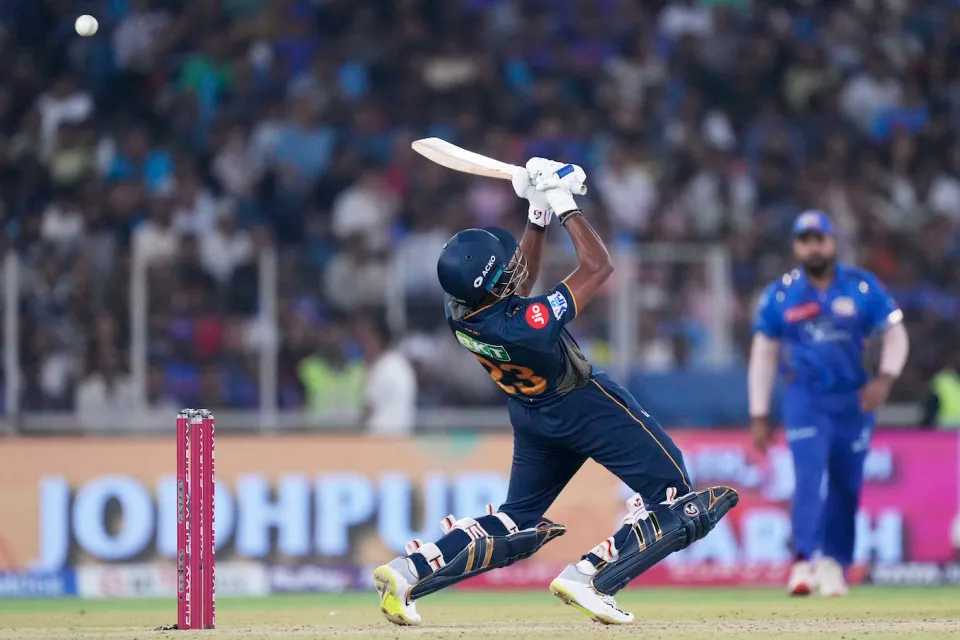
On a black-soil pitch in Ahmedabad where 180 was expected to be the par score, Gujarat Titans (GT) posted 196 for 8 after being put in. It proved to be 37 too many for Mumbai Indians (MI) who, despite Hardik Pandya’s return after an over-rate ban, were found lacking in all three departments.
While it was not a perfect game for GT either, they did most things right, including selecting a slow surface for this game, as their assistant and batting coach Parthiv Patel revealed during an in-game interview. Their main concern seemed to be Sai Sudarshan, leaving the field clutching his left hamstring after a diving effort. But Shubman Gill later said that it was merely a cramp.
Before the start of the season, Gill said he wanted GT to maximise the powerplay; they were the slowest side in that phase last season with a run rate of 7.72. Both Gill and Sudharsan did their best to improve that number. Each scored 32 off 18 balls in the first six overs and took the side to 66 for no loss. It was their third-highest powerplay score in the IPL. For Gill and Sudharsan, it was their fifth 50-plus stand in five innings they have opened together in T20s.
Once the field restrictions were relaxed, MI pulled things back. They conceded only 13 in the next three overs and dismissed Gill. It was a short ball from Hardik Pandya and Gill pulled it straight to Naman Dhir at deep square leg. Hardik has now dismissed Gill four times in 18 balls in T20s while giving away just 11 runs.
Jos Buttler ended the boundary drought by hitting Mitchell Santner for a six and a four off successive balls in the tenth over. He hit a boundary in each of the next four overs as well but Mujeeb Ur Rahman ended his stay on 39.
udharsan kept GT going for a while. He brought up his second fifty in as many games, off 33 balls, and took the side to 170 for 3 after 17 overs. But GT collapsed after that. On the last ball of the 18th over, Trent Boult trapped Sudharsan lbw with a yorker, Rahul Tewatia was run out on the first of the 19th, and Sherfane Rutherford holed out to deep extra cover the following ball. Despite Rashid Khan and Kagiso Rabada hitting a six each, GT could manage only 26 in the last three.
Coming into this game, Mohammed Siraj had conceded 74 runs off 55 balls to Rohit Sharma in ten T20 innings without ever dismissing him. Rohit looked set to extend that record when he hit Siraj for two fours in the first three balls of the chase. But Siraj finally had his man two balls later with a scrambled-seam delivery. It cut Rohit in half and went on to hit the stumps.
Tilak Varma attacked straightaway and hit Kagiso Rabada for 4, 4, 6 off successive balls in the next over. But Ryan Rickelton was struggling at the other end. In the fifth over, he tried to smash Siraj only to get an inside edge onto his stumps. MI ended the powerplay on 48 for 2.
After that blazing start, Tilak slowed down considerably, but Suryakumar Yadav kept MI in the game. Facing just his second ball, he brought out the supla shot and hit Siraj over fine leg for a six. Not long after, he meted out the same punishment to Ishant Sharma.
R Sai Kishore was not spared either. He beat Suryakumar in the flight but the batter still hit him over extra cover for a six. Suryakumar and Tilak added 62 off 42 balls for the third wicket in which the latter’s contribution was 21 off 22.
MI needed 100 from the last nine overs with eight wickets in hand – far from an unachievable task. But the slower balls were gripping into the surface. Hardik had used this ploy in the first innings, and Prasidh Krishan did the same for GT. Introduced in the 12th over, he had Tilak caught at wide long-on with a slower short ball. When Suryakumar tried to counter that tactic with the supla shot, he gloved it onto his helmet.
Hardik was booed at this very venue last season for leaving GT for MI. Tonight, when he came out to bat, the crowd chanted his name. But it was not easy for a new batter to score freely. With Hardik struggling and the asking rate climbing, Suryakumar decided to attack Prasidh but holed out to long-off. This, too, was a slower ball. How slow? Just 97.1 kph.
When Rabada dismissed Hardik in the next over, which went for just four, MI’s hopes were buried. They needed 73 from the last three overs. While Naman Dhir and Santner hit four fours and two sixes between them, the task was virtually insurmountable.
Gujarat Titans 196 for 8 in 20 overs (Sai Sudharsan 63, Joss Buttler 39, Shubman Gill 38, Sherfaine Rutherford 18; Trent Boult 1-34, Deepak Chahar 1-39, Mujeeb Ur Rahman 1-28, Hardik Pandya 2-29, Satyanarayana Raju 1-40) vs Mumbai Indians 160 for 6 in 20 overs (Suryakumar Yadav 48, Tilak Varma 39, Hardik Pandya 11, Naman Dhir 18*, Mitchell Santner 18*; Prasidh Krishna 2-18, Mohammed Siraj 2-34, Kagiso Rabada 1-42, Sai Kishore 1-37) by 36 runs
-

 Foreign News6 days ago
Foreign News6 days agoBuddhism’s holiest site erupts in protests over Hindu ‘control’ of shrine
-

 Features4 days ago
Features4 days agoCelebrating 25 Years of Excellence: The Silver Jubilee of SLIIT – PART I
-

 Editorial6 days ago
Editorial6 days agoWhen tractors become cars!
-
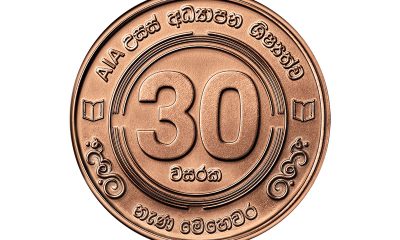
 Business2 days ago
Business2 days agoAIA Higher Education Scholarships Programme celebrating 30-year journey
-

 Business4 days ago
Business4 days agoCEB calls for proposals to develop two 50MW wind farm facilities in Mullikulam
-
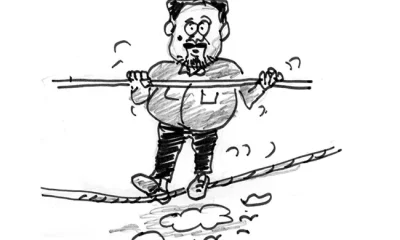
 Features4 days ago
Features4 days agoNotes from AKD’s Textbook
-

 Features6 days ago
Features6 days agoPolitics of Enforced Disappearances in Sri Lanka
-

 News1 day ago
News1 day agoGnanasara Thera urged to reveal masterminds behind Easter Sunday terror attacks












